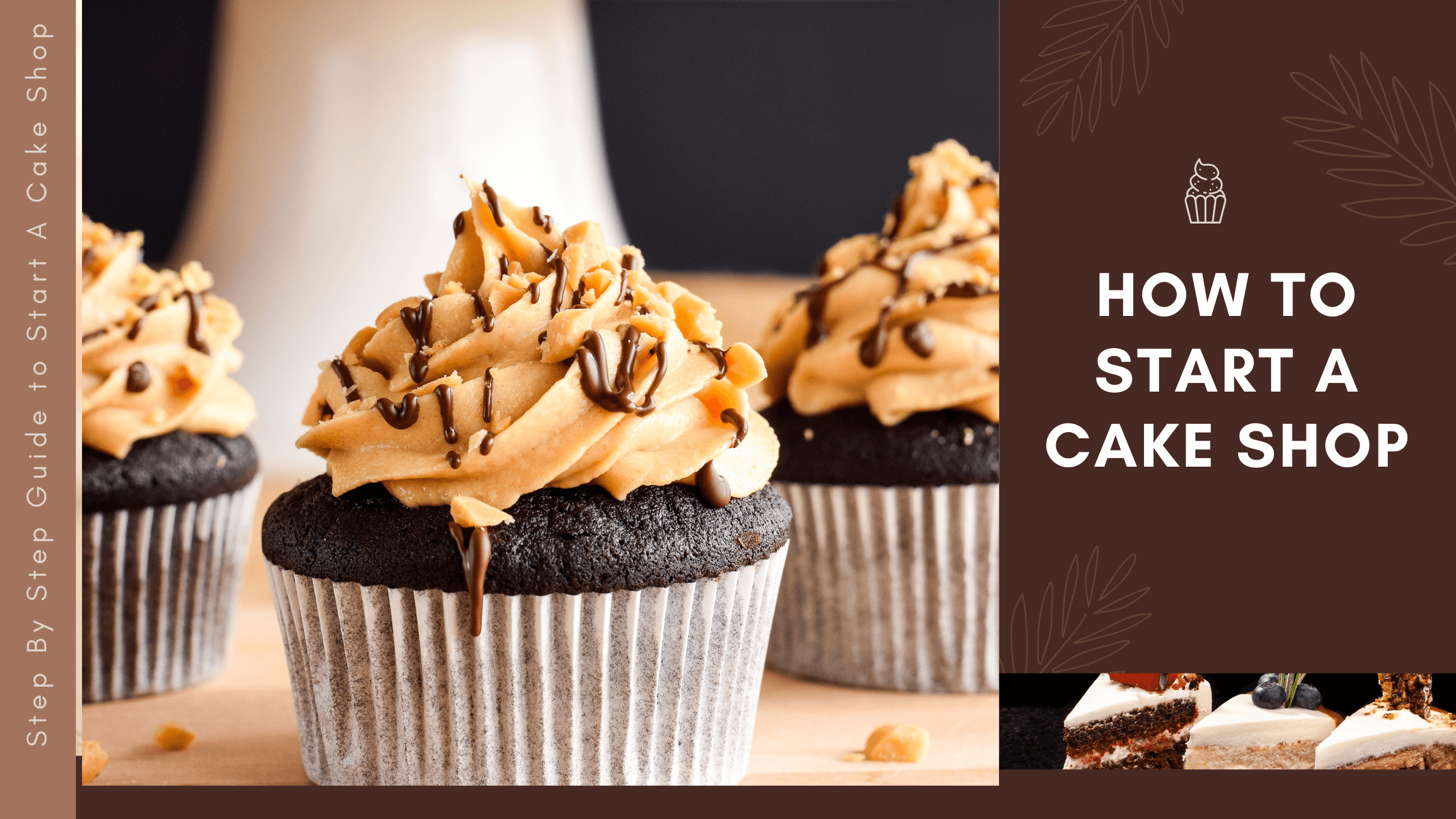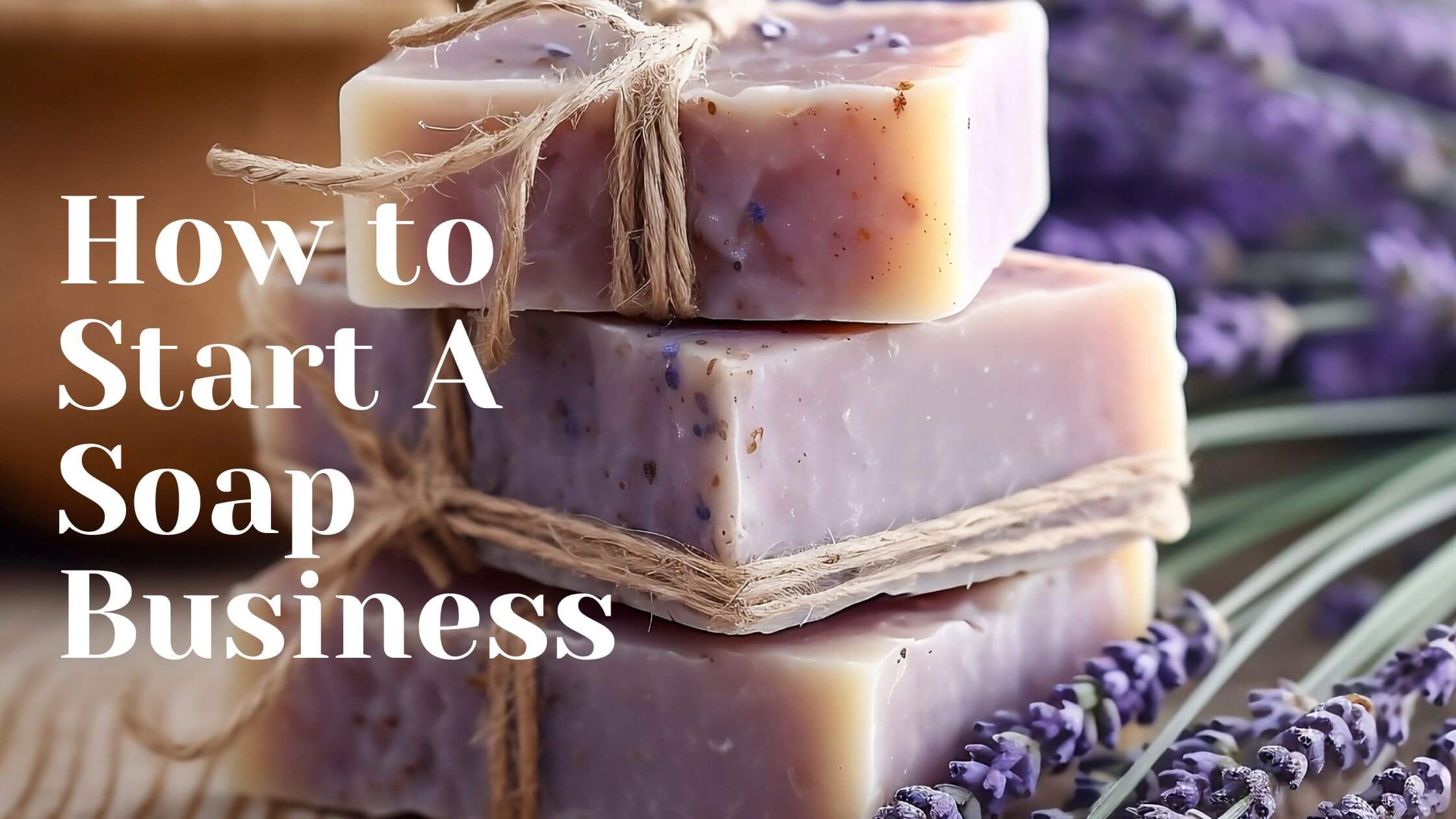Imagine you start a cake shop and fill it with the irresistible aroma of freshly baked goods, creating delicious masterpieces that delight customers and celebrate life’s special moments. Starting a cake shop may seem daunting, but with the right ingredients—a sprinkle of passion, a dash of planning, and a generous serving of creativity—you can transform your culinary dreams into reality.
In this comprehensive guide, we’ll walk you through the essential steps to launch your very own cake shop. From defining your niche and crafting a solid business plan to mastering baking techniques and implementing effective marketing strategies, we’ll cover everything you need to know to succeed in this sweet venture. Whether you’re interested in custom cakes for weddings and birthdays or looking to tap into the growing market for online orders, our step-by-step approach will help you navigate the world of baking with confidence. Let’s get started on this delicious journey and discover how to make your cake shop a delightful reality!
Bake It Till You Make It: Step-by-Step to Start A Cake Shop
Are you ready to turn your passion for baking into a thriving business? This comprehensive guide will walk you through each stage of starting your own cake shop, from perfecting your recipes to navigating the essentials of marketing and management. Let’s whip up success together, one delicious layer at a time!
Step 1:Discover Your Niche in the Cake World
To stand out in the competitive baking industry, it’s crucial to identify your unique niche. Start by exploring the various types of cakes you can offer, such as birthday cakes, wedding cakes, custom cakes, and cupcakes. Each category has its own customer base and seasonal demand, so understanding what appeals to your local market is vital.
Identifying Your Target Market
Consider who your ideal customers are. Are you aiming for local families celebrating birthdays, couples looking for the perfect wedding cake, or businesses in need of corporate event desserts? Tailoring your offerings to meet the preferences of these groups can enhance customer satisfaction and loyalty.

Researching Trends
Stay ahead of the curve by researching current baking trends. For instance, there’s a growing interest in gluten-free, vegan, and custom flavor combinations. By offering unique flavors and accommodating dietary preferences, you’ll attract a broader clientele and set your cake shop apart from competitors.
Step 2: Crafting Your Business Plan
A solid business plan is your roadmap to success. It outlines your vision, goals, and strategies for your cake shop, making it essential for attracting investors or securing loans.
Defining Your Vision
Start by articulating what makes your cake shop unique. Will you focus on high-quality ingredients, artistic designs, a catchy name, or a specific theme, like eco-friendly baking? Your vision will guide your decision-making and help you build a strong brand identity.
Setting Goals
Establish both short-term and long-term goals. Short-term goals could include launching your shop within six months or hosting a successful grand opening. Long-term goals might involve expanding your menu or opening additional locations.
Market Research
Conduct thorough market research to analyze competitors and identify gaps in the market. What do successful local cake shops offer, and where do they fall short? This insight will inform your menu development and marketing strategies.
Financial Planning
Develop a detailed budget that outlines your startup costs, including equipment, ingredients, licenses, and marketing expenses. Understanding your financial needs will enable you to plan effectively and set realistic sales targets.
Step 3: Essential Equipment and Ingredients
Investing in the right bakery equipment and sourcing quality ingredients are critical to your cake shop’s success. Here’s what you need to consider:
Bakery Equipment Checklist
Investing in the right bakery equipment and sourcing quality ingredients are critical to your cake shop’s success. Begin by compiling a comprehensive list of essential equipment, which may include high-quality commercial ovens that can handle multiple baking trays, stand mixers with various attachments for mixing, kneading, and whipping, and a variety of baking pans for different cake styles. Attractive display cases are also necessary to showcase your finished products and entice customers.
Having the right tools not only streamlines your baking process but also ensures consistency in your products, which is key to building a loyal customer base.

Sourcing Quality Ingredients
Your cakes’ flavor and quality hinge on the ingredients you use, so focus on sourcing high-quality items. This includes all-purpose cake flour or specialty blends for unique textures, granulated, brown, or powdered sugar for various recipes, and fresh, unsalted butter for rich flavor. Consider using local or organic eggs to enhance taste and quality.
Exploring local suppliers and farmers’ markets for fresh produce and specialty items can also be beneficial. Building relationships with suppliers can provide opportunities for bulk discounts and exclusive products.
Understanding Food Safety
Additionally, compliance with health regulations is crucial for operating your cake shop. Researching the food safety standards in your area and obtaining the necessary licenses and permits, such as health department inspections and food service permits, is essential. Not only does this protect your business, but it also assures customers that you prioritize quality and safety in your baking practices.
Step 4: Baking Techniques to Master
To ensure the quality and consistency of your cakes, mastering essential baking techniques is paramount. Begin by focusing on the foundational skills that will elevate your creations and set your cake shop apart from the competition.
Mixing Methods
Understanding different mixing methods is key to achieving the desired texture in your cakes. The classic creaming method, which involves beating together butter and sugar, produces light and fluffy cakes. On the other hand, the reverse creaming method—where dry ingredients are mixed with fat before adding wet ingredients—creates a denser and moist crumb. Experimenting with these techniques can help you discover unique textures that appeal to your customers.

Frosting and Decorating Skills
The frosting is another critical aspect of cake making. Mastering different frosting techniques, such as smooth finishes with buttercream or intricate piping designs, can dramatically enhance your cakes’ visual appeal. Fondant is another popular choice for professional-looking cakes, allowing for smooth surfaces and elaborate decorations. Investing time in learning these skills will enable you to create cakes that not only taste great but also look stunning, encouraging customers to share their experiences on social media and attract new clients.
Additionally, consider experimenting with a variety of fillings and flavors. Incorporating seasonal ingredients, such as pumpkin during the fall or berries in the summer, can keep your menu fresh and exciting. Unique flavor combinations can distinguish your cakes and encourage repeat business as customers come back to try new offerings.
Step 5: Marketing Your Cake Shop
Effective marketing is crucial for attracting customers and establishing your cake shop’s presence in the community. Start by crafting a strong brand identity that reflects your unique vision and values. Your brand name, logo, and overall aesthetic should resonate with your target market, whether you’re catering to wedding clients or local families celebrating birthdays.
Building an Online Presence
In today’s digital landscape, having a robust online presence is essential. Develop a user-friendly website that showcases your cake designs, provides detailed information about your offerings, and facilitates online orders. Use high-quality images that highlight your cakes’ beauty and craftsmanship, as visual appeal plays a significant role in attracting potential customers.
Social media platforms, particularly Instagram and Facebook, can serve as powerful marketing tools for your cake shop. Share engaging content, such as behind-the-scenes glimpses of the baking process, customer testimonials, and seasonal promotions. Regularly interacting with your audience fosters a sense of community and loyalty, encouraging customers to return and refer friends.
Local Marketing Strategies
Don’t underestimate the power of local marketing. Collaborate with local event planners, wedding coordinators, and businesses to expand your reach. Consider hosting tasting events, cake-decorating workshops, or community fundraisers to introduce your products to new audiences. These initiatives not only promote your cakes but also build relationships within your community, leading to valuable word-of-mouth referrals.
Implementing loyalty programs and special promotions can incentivize repeat business. For instance, consider offering a discount for first-time customers or a rewards system that grants customers a free cake after a certain number of purchases. These strategies can increase customer retention and enhance overall sales.
Step 6: Setting Up Your Shop
Setting up your cake shop requires careful planning and execution, ensuring that both the physical space and the business operations align with your vision. The location of your shop is vital; aim for areas with high foot traffic, proximity to event venues, and communities that appreciate artisanal baked goods. An inviting storefront can entice passersby and create a welcoming atmosphere for customers.
Designing the Shop
Once you secure a location, focus on designing an inviting and aesthetically pleasing environment. The interior decor should reflect your brand’s identity, using colors and materials that create a warm, friendly ambiance. Display cases should be strategically placed to showcase your cakes effectively, making them the focal point of the shop. A well-designed space not only enhances customer experience but also encourages patrons to take photos and share their visits on social media, boosting your visibility.

Understanding Legal Requirements
Compliance with legal requirements is crucial for operating a successful cake shop. Research local food safety regulations and ensure that you obtain all necessary licenses and permits. This may include health department inspections and food service permits. Adhering to food safety standards not only protects your business but also instills confidence in customers, assuring them that you prioritize hygiene and quality.
Additionally, consider investing in insurance to protect your business from unforeseen circumstances. General liability insurance can cover potential claims, while property insurance safeguards your equipment and physical space. Taking these precautions ensures that your cake shop is well-prepared for any challenges that may arise.
Step 7: Financial Management and Pricing Strategies
Effective financial management is crucial for the sustainability and growth of your cake shop. A clear understanding of your costs, pricing strategies, and revenue streams will help you maintain profitability while attracting customers.
Understanding Your Costs
Begin by calculating your fixed and variable costs. Fixed costs include rent, utilities, and salaries, which remain constant regardless of sales volume. Variable costs encompass ingredients, packaging, and supplies that fluctuate with production levels. Knowing these costs allows you to establish a baseline for pricing your cakes and identifying when you need to adjust your production to meet demand.
Creating a detailed budget is essential for tracking your expenses and managing your cash flow. Use financial software or spreadsheets to monitor sales, expenses, and profits regularly. This practice will help you make informed decisions about purchasing ingredients, managing labor, and planning for seasonal fluctuations in demand.
Pricing Strategies
When it comes to pricing your cakes, consider several factors. First, ensure your prices cover costs and contribute to your desired profit margin. Research local competitors to understand the market rates for similar products. Offering competitive pricing can attract customers, but be careful not to undervalue your creations.
Incorporate psychological pricing strategies, such as pricing items just below whole numbers (e.g., $29.99 instead of $30) to make them seem more appealing. Additionally, consider offering tiered pricing for custom cakes based on size, complexity, and decoration. This approach allows customers to choose options that fit their budgets while maximizing your revenue potential.
Lastly, periodically review your pricing strategy and be willing to adjust as needed. Factors such as ingredient costs, market demand, and customer feedback should influence your pricing decisions. By maintaining flexibility, you can respond to changes in the market and continue to meet customer expectations.
Step 8: Building Customer Relationships and Gathering Feedback
Establishing strong relationships with your customers is essential for fostering loyalty and encouraging repeat business. Happy customers are more likely to recommend your cake shop to friends and family, contributing to your long-term success.
Engagement and Communication
Engage with your customers both in-store and online. Provide exceptional customer service by being attentive, friendly, and knowledgeable. Train your staff to create a welcoming environment where customers feel valued and appreciated. Consider implementing a feedback system, such as comment cards or online surveys, to gather insights into customer preferences and experiences. This information can inform your menu offerings and service improvements.
Utilize social media platforms to interact with customers regularly. Encourage them to share photos of their cakes and tag your shop, creating a community around your brand. Respond promptly to comments and messages, showing that you value their input and are committed to providing an excellent customer experience.

Loyalty Programs and Promotions
Consider implementing a loyalty program to reward repeat customers. This could involve a point system where customers earn points for every purchase, which they can later redeem for discounts or free products. Such programs incentivize repeat business and foster a sense of belonging among your customers.
Promotions and seasonal specials can also attract new customers and encourage existing ones to try new offerings. For example, you might run holiday-themed promotions, birthday discounts, or limited-time flavor offerings. This strategy not only boosts sales but also keeps your cake shop fresh and exciting in the eyes of customers.
Acting on Feedback
Finally, always be open to feedback and willing to make changes based on customer suggestions. Regularly review customer comments to identify patterns or recurring themes. Use this feedback to refine your recipes, improve service, and enhance the overall customer experience.
Sprinkle Some Magic And Start Your Cake Shop Now
The journey of running a cake shop is filled with creativity and opportunity. Embrace the art of baking, continually refine your skills, and stay attuned to customer preferences. By implementing feedback and adapting to market trends, you can keep your offerings fresh and relevant.
As you embark on this sweet journey, remain committed to delivering high-quality products and exceptional customer service. With dedication, perseverance, and a sprinkle of creativity, your cake shop can become a cherished destination for cake lovers, celebrating life’s moments one delicious slice at a time. So, roll up your sleeves, unleash your culinary creativity, and watch your cake shop dream rise to success!







